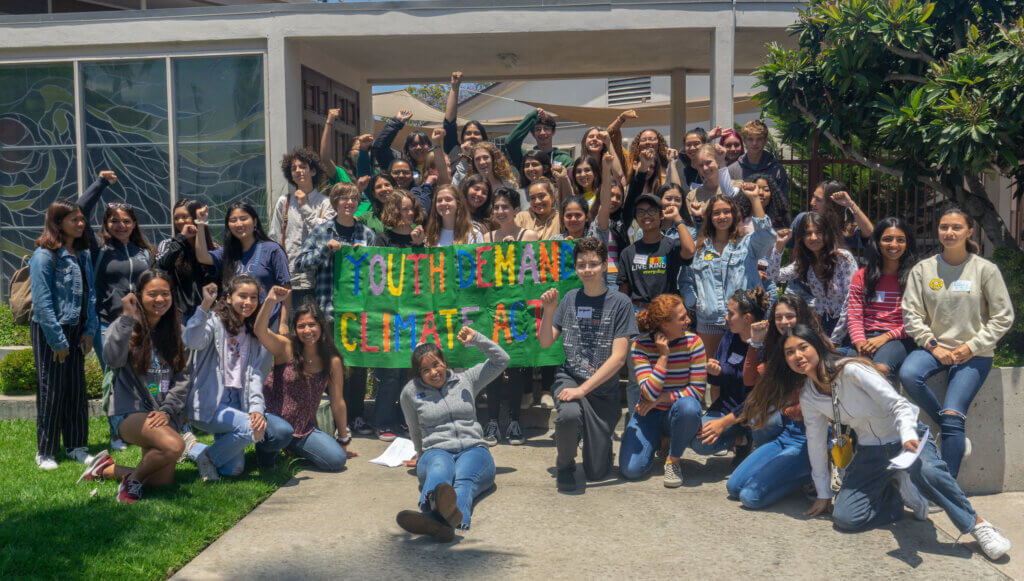
By Mariaisabel Blancarte
How It Started
Sustainable habits are vital and essential to our everyday lives and to the way the world operates. Although not always easy to adapt to, they allow us to make replacements that contribute to the overall health and conservation of our planet. In all honesty, prior to learning about the effects of plastic, specifically with straws, I was hesitant about using paper straws myself. They felt odd to drink out of, and I didn’t like the way they became soggy. I definitely was…not a fan. However, I later came to see that the small compromise of drinking out of a paper straw far outweighed the negative effects that plastic straws, and plastic overall cause to our environment. Similar to many of you all, I saw the negative effects that plastic straws have on marine life during a class at my university. The video displayed a helpless turtle who was struggling to breathe due to a plastic straw that had become stuck in its nose. It was extremely saddening to see, and it led me to looking deeper into plastic straws and the way that they not only harm animals, but the environment as a whole. What makes plastic straws so detrimental to our environment? They are “one of the most common types of single-use and overproduced plastics… and are also not biodegradable”. This means that once we finish using them, if not disposed of correctly (if not recycled), they can end up in wildlife habitats. This then leads to toxins being released into environmental and marine systems and also poses a physical danger to those animals that may consume the products by accident.
In efforts to curb these negative effects caused by straws, there are great alternatives. As previously mentioned, paper and metal straws are swaps that can prevent use of non-biodegradable material. However, there are many sustainable habits and products that aren’t so common. In this blog, I’ll cover commonly known sustainable practices, but also go into practices and habits that aren’t as widely known.
Covering the Basics
Reusable Water Bottles and Masks
Before getting into the less common and known sustainable habits, it’s always essential to cover the basics. One great way to avoid using plastic products, aside from metal straws, is through the use of reusable water bottles. Reusable water bottles are a great option because they require less oil use for production and hence, “release less carbon dioxide”, which is amazing for our atmosphere and environment as a whole. Along with other noteworthy reusables, are masks. Even prior to the Covid-19 pandemic, masks were a concern for the environment. This is because the “majority of masks are manufactured from long-lasting plastic materials, and if discarded can persist in the environment for decades to hundreds of years”. By making use of reusable face mask options, especially with materials such as cotton, it can help reduce plastic used, and hence avoid landfill and toxic chemicals in the land and sea.
The Less Common Sustainable Practices
Eat Less Meat
Many individuals may not know that meat consumption is directly related to the conservation and sustaining of water. According to Footprint, “A single pound of beef takes, on average, 1,800 gallons of water to produce”. By limiting the meat purchased and consumed, everyone can take part in conserving water. By sustaining water that is clean, it can allow us to put water to better uses that are good for our environment.
Buy Used Items
Another great sustainable practice is going the “used” route. For example, as mentioned by Arcadia, there are many items that we use in our daily lives or as household items that can be bought used. For example, these products include “furniture, clothing, tools, and more”. Major companies that are known for selling used items include Goodwill, as well as the Salvation Army. What makes using “used” items such a great sustainable practice is that by re-using an item, it prevents it from being disposed of improperly and ending up in a waste system that can directly negatively affect wildlife and cleanliness in the environment.
Vote
Finally, voting is an amazing way to participate directly in the sustainability of the planet. In order to ensure the safety of our communities, and our environment as a whole, it is vital to be politically involved. As mentioned by the Center for Biological Diversity, we should “vote for candidates with strong environmental platforms. Urge your representatives to pass stronger policies to limit greenhouse gases, fight climate change, and protect our wildlife”. By voicing out our concerns and demands as a community, we can ensure that our views and earth are represented in critical policies. As humans on this earth, it is our responsibility to keep it safe, one sustainable practice at a time!
Sources:
“How Do Straws Hurt the Environment?” Association of Zoos & Aquariums. Accessed October 13, 2021.
KOR Water, “How Reusable Water Bottles Help the Environment,” Kor Water (Kor Water, April 16, 2019).
Keiron Roberts Research Fellow in Clean Carbon Technologies and Resource Management, Cressida Bowyer Senior Research Fellow in the Faculty of Creative and Cultural Industries, Simon Kolstoe Senior Lecturer in Evidence Based Healthcare and University Ethics Advisor, and Steve Fletcher Professor of Ocean Policy and Economy. “Coronavirus Face Masks: An Environmental Disaster That Might Last Generations.” The Conversation, September 18, 2021.
“The Water Footprint of Food.” FoodPrint, August 11, 2020.
Arcadia, Team. “10 Sustainability Practices You Can Follow at Home.” Blog. Arcadia, August 2, 2017.
“12 Ways to Live More Sustainably.” 12 Ways to Live More Sustainably. Accessed October 14, 2021.
